Instruction
A modified “Stack and Tilt” swing that encourages upward hit with driver
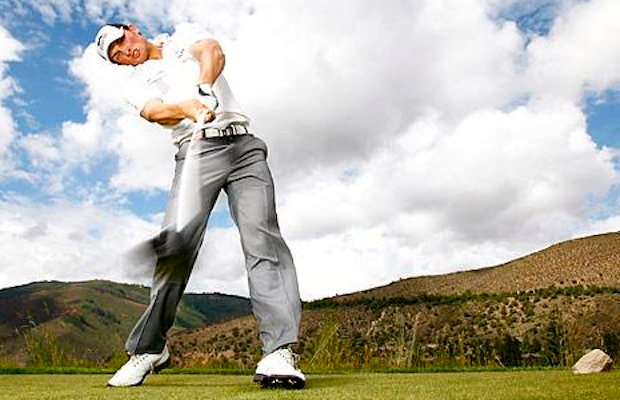
New and innovative swing models are always fun for me as a golf instructor, because they’re good for golf and push us as golf teachers to become better. Out of the box ideas and their fundamentals make us all stop and ponder the question — is this better than how I’m currently swinging? Some players who commit to restructuring their swing philosophy have changed and improved, while others are never heard from again.
A few years ago, Andy Plummer and Mike Bennett began to teach the popular swing theory that was influenced by Mac O’Grady called “Stack and Tilt” (ST). Some say Mac modified what he learned from The Golfing Machine and taught it to Mike and Andy, while others maintain that Mike and Andy created it to some degree. Whatever the source, it was and still is a very interesting and controversial swinging motion.
The biggest knock on ST is that while it’s great for iron play, it does not work so well with the driver since it encourages a steeper Angle of Attack. Personally, I have seen varieties of ST players — some who easily hit up on the ball with their driver, those who chop down too steeply and those forced to modify their mechanics to hit upwards.
NOTE: This article is NOT a knock on ST in any way, just my observations of what one player has done with it. As a teacher I NEVER discount another swing style as incorrect until I completely UNDERSTAND everything about it. As you know, it’s easy to criticize things we do not fully understand, which is dangerous. What I am here to tell you is that unless you can follow every move within a swing model, it will not work unless you make modifications that work for you. This makes us all different even if we were are swinging under the same model.
Making adjustments
Below I’d like to show you the swing of a ST player I know personally. He is a plus-handicap and a great driver of the golf ball, and has used the ST system since college. He’s a very big supporter of its merits. However, he had to make a couple of adjustments in efforts for it to fully work for him with the driver. This is NOT because the model is incorrect or does not work, but the fact that he could not work his pelvis correctly as he added speed with the driver. I’d like to show you the few simple adjustments he made, which allowed him to hit up on the ball with his driver a touch more.
While the changes that HE instituted work for him, they might not work for you — please check with your ST teacher first as I am only showing you what he does, not what everyone should do. I am NOT an accredited ST teacher and these are just my observations.
Here is his address position with his driver, please note three things he has changed a touch:
- His spine at address is a touch more centered not leaning as far left as he does with his irons.
- He has moved the ball forward in his stance.
- The ball is teed up higher.
Now after speaking with him regarding his mechanics, he feels that by placing his spine more centered, with the ball more forward and teed higher, it allows him a touch more “time” for the driver to flatten out and move “up” through the ball.
At the top you can see his hips in the normal “ST” position. while the upper torso is a touch more “behind” the ball due to this player’s modified spinal tilt at the address position. I have drawn a line and a circle to mark where this player is at the top and they will help you to see how he has changed his downswing to work better for him.
During the transition his pelvis does not move as up and forward as the normal ST player would do, which is one of the big reasons why his modified set-up is a necessity. He understands that the transition of the pelvis is the key element within the ST system if you want to hit up on the driver. Some players have this motion naturally while others do not, but his body does not work that way. He has two options — fix the pelvis action, or modify his ST model.
So the key here is that if you cannot master every move within your chosen swing model, you can always work around things a touch so it can work for you. Below you will see how this player uses the ST system so successfully for him and how he gets around a problem area in his transitional sequence, which has proven difficult for him in the past.
The key to his upward hit with the driver is the “standing up” motion he has through impact. Now obviously you would not teach this, but as a better player, this motion along with his set up modifications help him to hit up on the driver, create more speed, increase his smash factor and dump the lag so that he can have the correct dynamic loft at impact in order to hit the ball the correct height.
As he stands up, his shoulder rotation stalls a touch allowing the lag pressure he has created in the downswing to decrease, which begins the release sequence. As he stands up, rotation stalls and the release occurs a touch earlier, thus his loft at impact is 15.1 degrees, which is right on the money. If he didn’t stand up he would carry too much lag into impact (too much handle drag) and his Angle of Attack would be downward, not upward as it is shown here. So by hitting balls and modifying his ST motion a touch, he has learned how to hit the ball successfully despite the transitional nuances he has within in his swing.
So hopefully you have seen that we are not robots, nor can each of us master every move in a chosen swing model. If you can’t make move “X” then it’s up to your teacher, as well as the player, to modify things within the system to work more effectively for the player. It’s a ying and a yang between the player and the teacher — don’t get caught in the middle!
Instruction
The Wedge Guy: Beating the yips into submission

There may be no more painful affliction in golf than the “yips” – those uncontrollable and maddening little nervous twitches that prevent you from making a decent stroke on short putts. If you’ve never had them, consider yourself very fortunate (or possibly just very young). But I can assure you that when your most treacherous and feared golf shot is not the 195 yard approach over water with a quartering headwind…not the extra tight fairway with water left and sand right…not the soft bunker shot to a downhill pin with water on the other side…No, when your most feared shot is the remaining 2- 4-foot putt after hitting a great approach, recovery or lag putt, it makes the game almost painful.
And I’ve been fighting the yips (again) for a while now. It’s a recurring nightmare that has haunted me most of my adult life. I even had the yips when I was in my 20s, but I’ve beat them into submission off and on most of my adult life. But just recently, that nasty virus came to life once again. My lag putting has been very good, but when I get over one of those “you should make this” length putts, the entire nervous system seems to go haywire. I make great practice strokes, and then the most pitiful short-stroke or jab at the ball you can imagine. Sheesh.
But I’m a traditionalist, and do not look toward the long putter, belly putter, cross-hand, claw or other variation as the solution. My approach is to beat those damn yips into submission some other way. Here’s what I’m doing that is working pretty well, and I offer it to all of you who might have a similar affliction on the greens.
When you are over a short putt, forget the practice strokes…you want your natural eye-hand coordination to be unhindered by mechanics. Address your putt and take a good look at the hole, and back to the putter to ensure good alignment. Lighten your right hand grip on the putter and make sure that only the fingertips are in contact with the grip, to prevent you from getting to tight.
Then, take a long, long look at the hole to fill your entire mind and senses with the target. When you bring your head/eyes back to the ball, try to make a smooth, immediate move right into your backstroke — not even a second pause — and then let your hands and putter track right back together right back to where you were looking — the HOLE! Seeing the putter make contact with the ball, preferably even the forward edge of the ball – the side near the hole.
For me, this is working, but I am asking all of you to chime in with your own “home remedies” for the most aggravating and senseless of all golf maladies. It never hurts to have more to fall back on!
Instruction
Looking for a good golf instructor? Use this checklist

Over the last couple of decades, golf has become much more science-based. We measure swing speed, smash factor, angle of attack, strokes gained, and many other metrics that can really help golfers improve. But I often wonder if the advancement of golf’s “hard” sciences comes at the expense of the “soft” sciences.
Take, for example, golf instruction. Good golf instruction requires understanding swing mechanics and ball flight. But let’s take that as a given for PGA instructors. The other factors that make an instructor effective can be evaluated by social science, rather than launch monitors.
If you are a recreational golfer looking for a golf instructor, here are my top three points to consider.
1. Cultural mindset
What is “cultural mindset? To social scientists, it means whether a culture of genius or a culture of learning exists. In a golf instruction context, that may mean whether the teacher communicates a message that golf ability is something innate (you either have it or you don’t), or whether golf ability is something that can be learned. You want the latter!
It may sound obvious to suggest that you find a golf instructor who thinks you can improve, but my research suggests that it isn’t a given. In a large sample study of golf instructors, I found that when it came to recreational golfers, there was a wide range of belief systems. Some instructors strongly believed recreational golfers could improve through lessons. while others strongly believed they could not. And those beliefs manifested in the instructor’s feedback given to a student and the culture created for players.
2. Coping and self-modeling can beat role-modeling
Swing analysis technology is often preloaded with swings of PGA and LPGA Tour players. The swings of elite players are intended to be used for comparative purposes with golfers taking lessons. What social science tells us is that for novice and non-expert golfers, comparing swings to tour professionals can have the opposite effect of that intended. If you fit into the novice or non-expert category of golfer, you will learn more and be more motivated to change if you see yourself making a ‘better’ swing (self-modeling) or seeing your swing compared to a similar other (a coping model). Stay away from instructors who want to compare your swing with that of a tour player.
3. Learning theory basics
It is not a sexy selling point, but learning is a process, and that process is incremental – particularly for recreational adult players. Social science helps us understand this element of golf instruction. A good instructor will take learning slowly. He or she will give you just about enough information that challenges you, but is still manageable. The artful instructor will take time to decide what that one or two learning points are before jumping in to make full-scale swing changes. If the instructor moves too fast, you will probably leave the lesson with an arm’s length of swing thoughts and not really know which to focus on.
As an instructor, I develop a priority list of changes I want to make in a player’s technique. We then patiently and gradually work through that list. Beware of instructors who give you more than you can chew.
So if you are in the market for golf instruction, I encourage you to look beyond the X’s and O’s to find the right match!
Instruction
What Lottie Woad’s stunning debut win teaches every golfer

Most pros take months, even years, to win their first tournament. Lottie Woad needed exactly four days.
The 21-year-old from Surrey shot 21-under 267 at Dundonald Links to win the ISPS Handa Women’s Scottish Open by three shots — in her very first event as a professional. She’s only the third player in LPGA history to accomplish this feat, joining Rose Zhang (2023) and Beverly Hanson (1951).
But here’s what caught my attention as a coach: Woad didn’t win through miraculous putting or bombing 300-yard drives. She won through relentless precision and unshakeable composure. After watching her performance unfold, I’m convinced every golfer — from weekend warriors to scratch players — can steal pages from her playbook.
Precision Beats Power (And It’s Not Even Close)
Forget the driving contests. Woad proved that finding greens matters more than finding distance.
What Woad did:
• Hit it straight, hit it solid, give yourself chances
• Aimed for the fat parts of greens instead of chasing pins
• Let her putting do the talking after hitting safe targets
• As she said, “Everyone was chasing me today, and managed to maintain the lead and played really nicely down the stretch and hit a lot of good shots”
Why most golfers mess this up:
• They see a pin tucked behind a bunker and grab one more club to “go right at it”
• Distance becomes more important than accuracy
• They try to be heroic instead of smart
ACTION ITEM: For your next 10 rounds, aim for the center of every green regardless of pin position. Track your greens in regulation and watch your scores drop before your swing changes.
The Putter That Stayed Cool Under Fire
Woad started the final round two shots clear and immediately applied pressure with birdies at the 2nd and 3rd holes. When South Korea’s Hyo Joo Kim mounted a charge and reached 20-under with a birdie at the 14th, Woad didn’t panic.
How she responded to pressure:
• Fired back with consecutive birdies at the 13th and 14th
• Watched Kim stumble with back-to-back bogeys
• Capped it with her fifth birdie of the day at the par-5 18th
• Stayed patient when others pressed, pressed when others cracked
What amateurs do wrong:
• Get conservative when they should be aggressive
• Try to force magic when steady play would win
• Panic when someone else makes a move
ACTION ITEM: Practice your 3-6 foot putts for 15 minutes after every range session. Woad’s putting wasn’t spectacular—it was reliable. Make the putts you should make.
Course Management 101: Play Your Game, Not the Course’s Game
Woad admitted she couldn’t see many scoreboards during the final round, but it didn’t matter. She stuck to her game plan regardless of what others were doing.
Her mental approach:
• Focused on her process, not the competition
• Drew on past pressure situations (Augusta National Women’s Amateur win)
• As she said, “That was the biggest tournament I played in at the time and was kind of my big win. So definitely felt the pressure of it more there, and I felt like all those experiences helped me with this”
Her physical execution:
• 270-yard drives (nothing flashy)
• Methodical iron play
• Steady putting
• Everything effective, nothing spectacular
ACTION ITEM: Create a yardage book for your home course. Know your distances to every pin, every hazard, every landing area. Stick to your plan no matter what your playing partners are doing.
Mental Toughness Isn’t Born, It’s Built
The most impressive part of Woad’s win? She genuinely didn’t expect it: “I definitely wasn’t expecting to win my first event as a pro, but I knew I was playing well, and I was hoping to contend.”
Her winning mindset:
• Didn’t put winning pressure on herself
• Focused on playing well and contending
• Made winning a byproduct of a good process
• Built confidence through recent experiences:
- Won the Women’s Irish Open as an amateur
- Missed a playoff by one shot at the Evian Championship
- Each experience prepared her for the next
What this means for you:
• Stop trying to shoot career rounds every time you tee up
• Focus on executing your pre-shot routine
• Commit to every shot
• Stay present in the moment
ACTION ITEM: Before each round, set process goals instead of score goals. Example: “I will take three practice swings before every shot” or “I will pick a specific target for every shot.” Let your score be the result, not the focus.
The Real Lesson
Woad collected $300,000 for her first professional victory, but the real prize was proving that fundamentals still work at golf’s highest level. She didn’t reinvent the game — she simply executed the basics better than everyone else that week.
The fundamentals that won:
• Hit more fairways
• Find more greens
• Make the putts you should make
• Stay patient under pressure
That’s something every golfer can do, regardless of handicap. Lottie Woad just showed us it’s still the winning formula.
FINAL ACTION ITEM: Pick one of the four action items above and commit to it for the next month. Master one fundamental before moving to the next. That’s how champions are built.
PGA Professional Brendon Elliott is an award-winning coach and golf writer. You can check out his writing work and learn more about him by visiting BEAGOLFER.golf and OneMoreRollGolf.com. Also, check out “The Starter” on RG.org each Monday.
Editor’s note: Brendon shares his nearly 30 years of experience in the game with GolfWRX readers through his ongoing tip series. He looks forward to providing valuable insights and advice to help golfers improve their game. Stay tuned for more Tips!

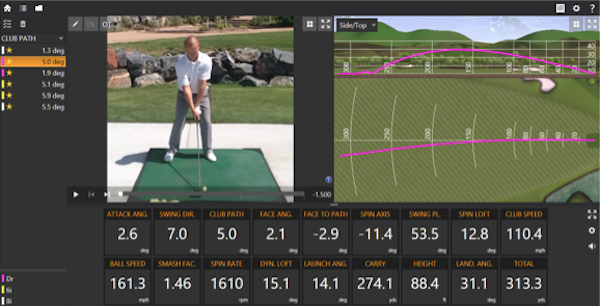
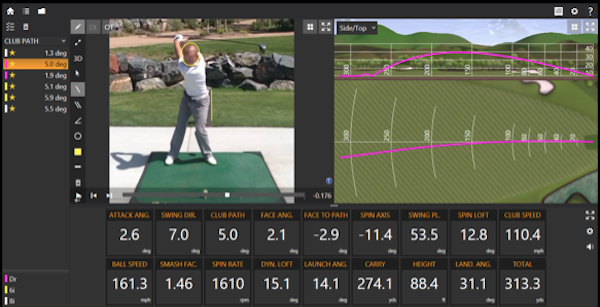
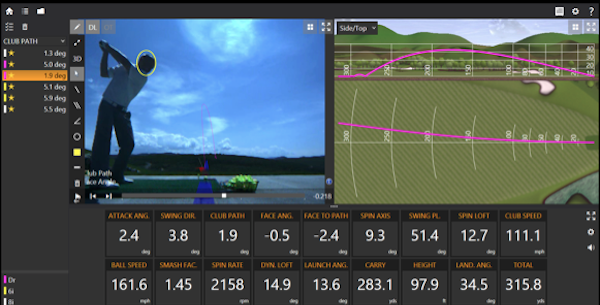
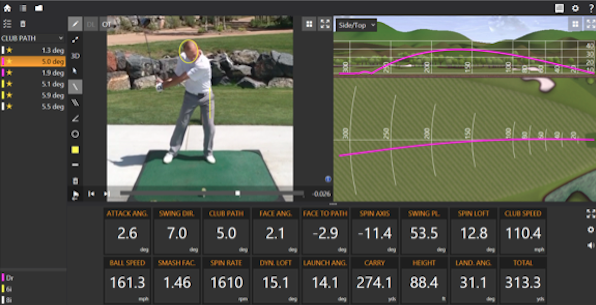
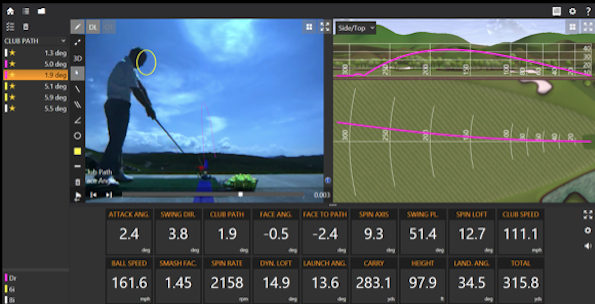










Troy
Nov 2, 2014 at 1:09 pm
It is mind boggling how much grief this Stack and Tilt generates. Across the Internet there is literally hundreds of thousands of videos, forums, websites and golf schools that promote countless ways to improve swinging a club at a little white ball. Alignment sticks, towels tucked under arms, pvc pipes tied to your waist, Medicus clubs, video recording apps, swing speed devices, laser products, etc are a taste of what is promoted. Lean forward, lean back, tee high, tee low, one plane, two plane, Hogan swing, Tiger swing, head forward, head behind………..GET THE POINT? Then to top it off hundreds of thousands golfers that will NEVER make the PGA Tour denounce various “methods” because guys that DO PLAY ON THE PGA TOUR are not using said “methods”. I personally don’t care what style one uses. If it works FOR YOU and it’s within the rules do it! If it gets you out on the course and you are enjoying YOUR game then go for it. With a national average score of 100 I’d say Stack and Tilt is the least of players problems.
golferjack
Sep 17, 2014 at 4:08 pm
I have read all of the comments and would just ask who thinks Sean Foley is a good teacher? Does he not have ST in his work. To reply to the guys who say you can’t hit a fade with ST, I saw Mike bennett give the best live Demo I have ever seen with all shapes and Clubs and more to the Point saying what he would hit before he did it! At the end of theday we are all trying to become better Players and teachers, I hope, give Mike and Andy the credit they deserve for the work they put in.
golferjack
Sep 17, 2014 at 4:10 pm
PS forgot to say, nice article, like your work a lot Tom.
Tom Stickney II
Sep 17, 2014 at 6:05 pm
Thx sir
Tom Stickney II
Sep 17, 2014 at 6:05 pm
They have worked hard.
Clown
Sep 21, 2014 at 2:05 am
golferjack,
Bennet can hit whatever he wants if he’s simply doing a demonstration to a driving range, if he wants, and make himself look like a clown, for all care. He doesn’t have to hit precision cuts and controlled fades into tucked pins under pressure in a tournament to greens running at an average of 11 or more. That’s the difference.
DM
Sep 22, 2014 at 9:59 pm
Really? I believe Mike tried to Monday qualify on the PGA Tour a couple years ago and shot 65? Just because the guy maybe can’t play as consistent as he wants to, doesn’t mean he can’t play.
golferjack
Sep 23, 2014 at 3:19 am
I agree with your comment, there is of course more to golf than just the swing and we all know that the best teachers aren’t the best Players. His demo however did Show that the swing he teaches works and that it is also useable with the Driver. Mike and Andy both played on lower Level tours and I’m sure that compared to most of us they would still get it around.
Cup80
Sep 16, 2014 at 6:11 am
Tom, excellent article and really appreciate the unbiased (un-dogmatic) way you approached this subject which has seen so many heated discussions that didn’t lead anywhere in the end.
Switching to lefty in 2013 (being natural lefty) my teacher had me set out on an ST swing to which himself migrated after starting out his career in the Golfing Machine. I, myself had dived into GM for a good 10 years and spent hours of discussions on it. Ben Doyle has been a close contact and big influence to our teachers and personally trained our best player while he was in the US.
I found myself very well in this article and how your friend has tackled this challenge, as some said before it’s probably the most intuitive way to adjust the setup like this and has worked very well for me as well.
Again, excellent article in this very sensitive subject, whether one agrees to ST or not, really well done!
Tom Stickney II
Sep 16, 2014 at 9:35 am
Thx. I learned under Ben. All the best.
Sunil
Sep 30, 2014 at 12:14 am
I guess looking at this video again of my swing and the drill , the early resleae of my right hand is due to my hands taking over once again on my down swing. This should answer my own question that I just wrote to you.I just took out an aluminum pole and ran it up from the floor through my hands & touching my left side, it makes it impossible to flip the club on the forward swing. I practiced with it and then hit some balls trying to get the same big muscle feeling I had with the extension pole. Is this Ok to do. Thanks, Jim
No.
Sep 16, 2014 at 3:50 am
If it’s “modified” then it’s not S&T, then, is it? Obviously.
Try hitting a giant fade with S&T. The kind of shot that you aim outside of the rough and bring it back to the other side of the fairway with a massive curve. You can’t. And I know this because I’ve seen S&T guys try. They just can’t do it.
So don’t do it.
Tom Stickney II
Sep 16, 2014 at 9:37 am
Everyone has idiosyncratic motions…this doesn’t mean you abandon the entire system. In the end you must figure out what works best for your game.
Desmond
Sep 16, 2014 at 5:35 pm
It’s not tough to do for S&T — aim club slightly left, have path more closed to face – cut.
Physics
Sep 16, 2014 at 12:40 pm
You realize impact dynamics and physics don’t care if you’re stacking and tilting, right? Just because the ones you know can’t hit a big fade that way doesn’t mean it can’t be done.
If you know how to change face and path you can make the ball curve any way you want with any type of swing.
No
Sep 16, 2014 at 1:58 pm
http://www.golf.com/video/just-say-no-stack-tilt
It’s on GOLF.COM. Ahahaha!
Just say no
Jim H
Sep 22, 2014 at 12:56 pm
i cannot believe they published that video. Im not a S&T guy but i cant believe how just wrong that is.
No
Sep 16, 2014 at 2:06 pm
http://www.youtube.com/watch?v=qZPGuZWJ0vg
Every single one of them hit a draw.
Draw
Draw
Draw
Draw
Draw
Draw
Draw
And you wonder why they can’t drive the ball off the tee or hit a fade. They’ve proven it to themselves.
Tom Stickney II
Sep 16, 2014 at 5:48 pm
Very easy to shift path too far rt when aoa is down.
Desmond
Sep 17, 2014 at 6:02 am
The S&T Stock Shot is a push-draw. From what I’ve heard from pros, they stick to their stock shot most of the time. If they want to cut, they make a change to face and path.
Tom Stickney II
Sep 16, 2014 at 5:47 pm
It’s all face to path…
No
Sep 17, 2014 at 1:09 am
Then show us a S&T hitting a Trevino/Bubba Watson type fade around the corner as a preferred ball flight as opposed to the draw.
Desmond
Sep 17, 2014 at 6:03 am
Buy the S&T vids and see a cut
GolfingInOz
Sep 15, 2014 at 9:08 pm
I had a traditional swing with over-swing issues and ended up just ‘flicking’ at the ball at impact. I wasn’t able to really compress the ball and hit the ball consistently. Over the last 18 months I have adopted a lot of ST into my swing and the improvements have been measurable. Previously with my old swing I would play one round to my handicap of five or six then the next four rounds I would play to 10+, however now I am playing consistently to three or four!! ST has seen me have good percentages for greens and fairways in regulation (yes I am a nerd and I table all my rounds to find where I went wrong).
I don’t understand the hatred/dislike for ST, if it helps a person out and improves their game and makes them want to play more then I am all for it. Honestly, if a new swing mechanic was Happy Gilmore style and people were running up to their ball to hit it and it approved their game then great.
Tom – great article and it just proves that you can adopt aspects of any swing style and be able to improve your game.
Tom Stickney II
Sep 15, 2014 at 9:51 pm
Thx. I’m a huge fan of their work.
J
Sep 15, 2014 at 4:19 pm
Anything has to be better than S&T. Causes serious stress on the lumbar spine. From the swing standpoint, it is horrible for the long game, Hitting down on a modern driver spins like the dickens. Look at what happened to EVERY player from the commercials they used to have on GolfChannel like axley, weir, badds, snedeker. Not one of them was particularly long or accurate with any club in the bag. I never see them in Magazines or interviews anymore so maybe people finally relize, it does not work.
eli yates
Sep 15, 2014 at 6:23 pm
The S&T guys were literally just in… i wanna say golf digest… not even 3 months ago. I dont think you really have any basis for your statement… not picking on you… i just dont think its fair to make negatively biased statements based on nothing… i doubt you even compared before and after stats for the players you mentioned…
Tom Stickney II
Sep 15, 2014 at 7:31 pm
Eli…I believe that comment was for J above?
eli yates
Sep 15, 2014 at 9:53 pm
Absolutely. I liked the article. Obviously the driver would be a struggle for most. I have gone through some swing changes geared toward a stack and tilt/ sean foley style (not intentionally) and with the driver i noticed i was way too steep… so all i did was feel like my upper body was hanging back a little while my lower body stayed moving foward. I maintain my angles and hit the ball on a more level stroke. All i did to achieve it was essentially the flying wedge drill with the driver. I just worked on hitting that and then once i got that engrained it was just a matter of swing through to my finish. Works for me anyway.
Tom Stickney II
Sep 17, 2014 at 8:23 am
All that matters!
Desmond
Sep 15, 2014 at 6:35 pm
One doesn’t generate back problems when doing S&T correctly. There is a lack of so-called coil, and therefore, lack of stress. The right leg straightens and hips turn as much as you want on the backswing. As to the driver, over 4 years ago, they made adjustments to the driver swing – ball more forward, more tilt axis at address, etc. It’s not rocket science. When I did S&T, my AOA was positive. You will notice that when Touring Pros first used S&T, they did well. It was only when they “got it” that they went downhill. Why? Possibilities are that they bought into the pressure on the front foot for the entire swing. Studies have shown that weight pressure does go to the back foot during the backswing, and then forward. So you have a lot of people moving away from B&P and going to a center pivot swing. You see a lot of Touring Pros using elements of S&T, but not as taught by B&P. So B&P have made a great contribution to the golf community, but many believe they need to evolve their teaching.
Tom Stickney II
Sep 15, 2014 at 7:32 pm
Center pivots are the rage currently. Thx. 🙂
Stretch
Sep 15, 2014 at 9:29 pm
Tom, have you looked in on the pivot patterns based on the testing criteria that E A Tischler has come up with?
Tom Stickney II
Sep 15, 2014 at 9:52 pm
Yes…ea is quite the teacher! Us bald guys have to stick together.
No.
Sep 16, 2014 at 3:46 am
“So B&P have made a great contribution to the golf community, but many believe they need to evolve their teaching.”
But they can’t. If they do “evolve” it won’t be S&T, they’ll end up at Snead or Hogan, Trevino or Floyd, and even Norman or Bubba Watson, because there is nowhere for them to go. All you have to do in golf is to hit the ball, no matter how it’s done, and make it move forward as fast and as far as possible, regardless of how the swing is.
I think people would rather swing with a swing that can last a lifetime, not some band-aid swing for the young body like S&T is.
That’s the whole point.
Desmond
Sep 16, 2014 at 5:38 pm
Haters gotta’ hate…
Stats
Sep 17, 2014 at 12:36 pm
The only hater is you, Desmond. You just can’t accept the fact that S&T proved nothing except that it doesn’t work and that you will always end up back to Snead, Hogan, Trevino and on down to Morad or Moe Norman.
Get over yourself, Desmond
Tom Stickney II
Sep 17, 2014 at 8:24 am
Most swing models evolve as teachers learn more…
Jimmy Tudeski
Sep 19, 2014 at 12:59 am
Stack and Tilt is not a band aid. It is simply a system designed to add critical elements to a players swing in a order to achieve the results as quickly as possible. All players stack and tilt, some just have more elements than others and a ball flight preference or bias will change elements used.
Marsella
Sep 29, 2014 at 9:42 pm
If I’m picturing what you are siynag correctly, yes. Ironically, I was working on a blog entry very similar to what you are siynag. In a lesson yesterday, I had my student simulate impact against a pole on the range he then hit wonderful shots because the muscle image was still fresh and he just reproduced it with a drill. This is not finished yet but I think you will get the idea. I will do a video soon.Here is the post draft:Use A Kinesthetic Drill to Map Impact for Recall If you setup in a doorway with the door jamb opposite your front hip socket, then simulate impact by putting the palm of your back hand on the jamb, and turning your core to push against the jamb (rotating like the downswing, not sliding forward), you will push on the jamb and actually program or map this feeling in your brain, Kinesthetically. So why would you want this? Well, it is teaching the muscles the feeling of what you want to achieve through impact. It is kind of like recording a mental picture of all of your muscles (turning and pushing), that you will recall just before you swing. Then once you’re setup, recall the feeling of the drill then go. The visualization is so fresh in your mind, your body will reproduce it.
Tom Stickney II
Sep 15, 2014 at 7:29 pm
Mike and Andy have made some adjustments from what I understand as with all swing models over time. Still a valid method for some IMO
Tom Stickney II
Sep 16, 2014 at 9:39 am
It’s been modified a touch.
vinax
Sep 15, 2014 at 1:21 pm
I love your articles. This one is very limited in appeal and scope though.
Tom Stickney II
Sep 15, 2014 at 3:42 pm
Thx but I have an obligation to cover all topics to be fair
Desmond
Sep 15, 2014 at 11:23 am
You might try this vid from 4 years ago by Dave Wedzik. Although he no longer works with S&T, this vid was done when he used S&T. It explains hitting the driver from S&T Guys.
https://www.youtube.com/watch?v=JXuikUmHeEQ&feature=youtu.be
Tom Stickney II
Sep 15, 2014 at 3:42 pm
Thx